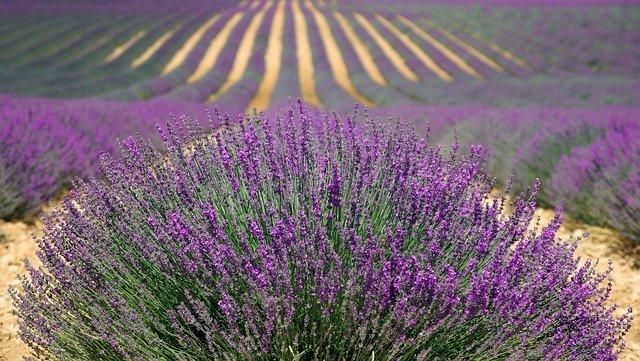Lavender Flower

Also known as Lavandula (spp- intermedia, officinalis and angustifolia), English lavender, Broad-leaf Lavender, Grande Lavander and True Lavender.
Introduction Lavender is aromatic perennial evergreen shrub. Its woody stems bear lavender or purple flowers from late spring to early autumn, although there are varieties with blossoms of white or pink. Lavender is native to the Mediterranean, but now cultivated in cool-winter, dry-summer areas in Europe and the Western United States. Lavender was used as an after-bath perfume by the Romans, who gave the herb its name from the Latin lavare, to wash.
Constituents Essential oil containing borneol, camphor, geraniol, and linalool, also coumarins, caryophyllene, tannins, and other antioxidant compounds.
Parts Used Flowers.
Typical Preparations Teas, tinctures, and added to baked goods. Cosmetically it has a multitude of uses and can be included in ointments for pain and burn relief.
Summary The German Commission E commended lavender for treating insomnia, nervous stomach, and anxiety. The British Herbal Phamacopoeia lists lavender as a treatment for flatulence, colic, and depressive headaches, and many modern herbal practitioners use the herb to treat migraines in menopause. In Spain, lavender is added to teas to treat diabetes and insulin resistance.
Precautions For best results, avoid heating the herb directly with boiling water, although a simmer is fine.
PURCHASE LAVENDER FLOWER EXTRACT
For educational purposes only. This information has not been evaluated by the Food and Drug Administration. This information is not intended to diagnose, treat, cure, or prevent any disease.
This information courtesy of MOUNTAIN ROSE HERBS, with full, written permission for reuse. For further traditional information concerning Lavender, please visit this excellent resource from Botanical.com. Used with full, written permission.







